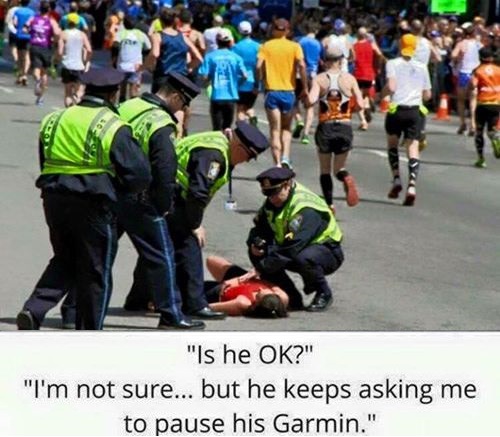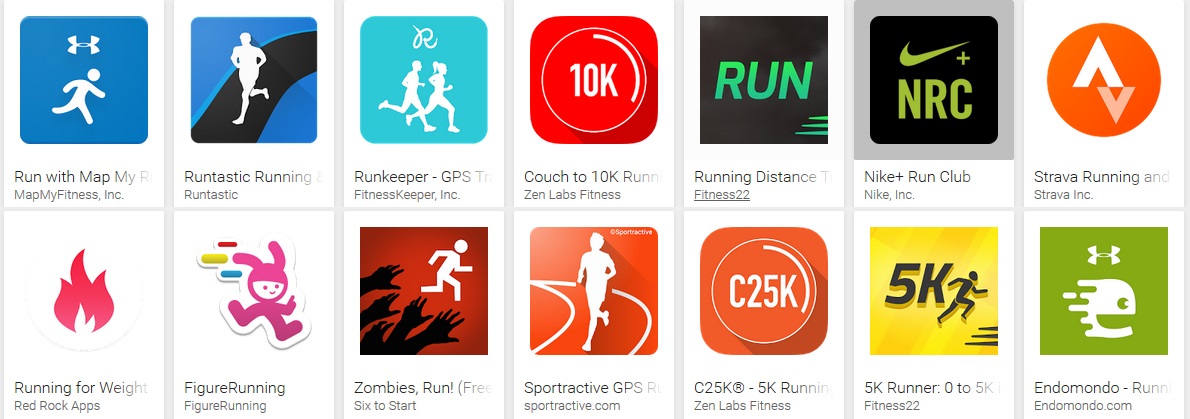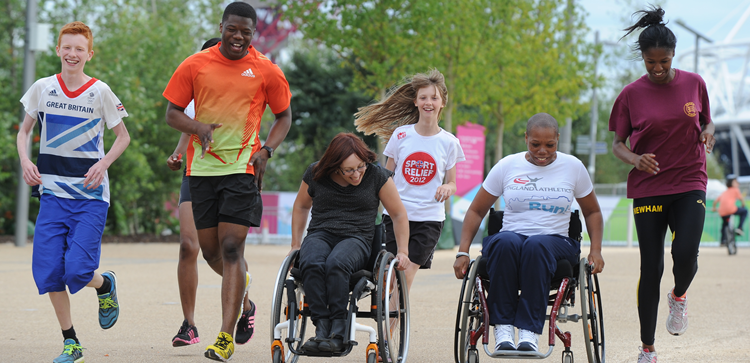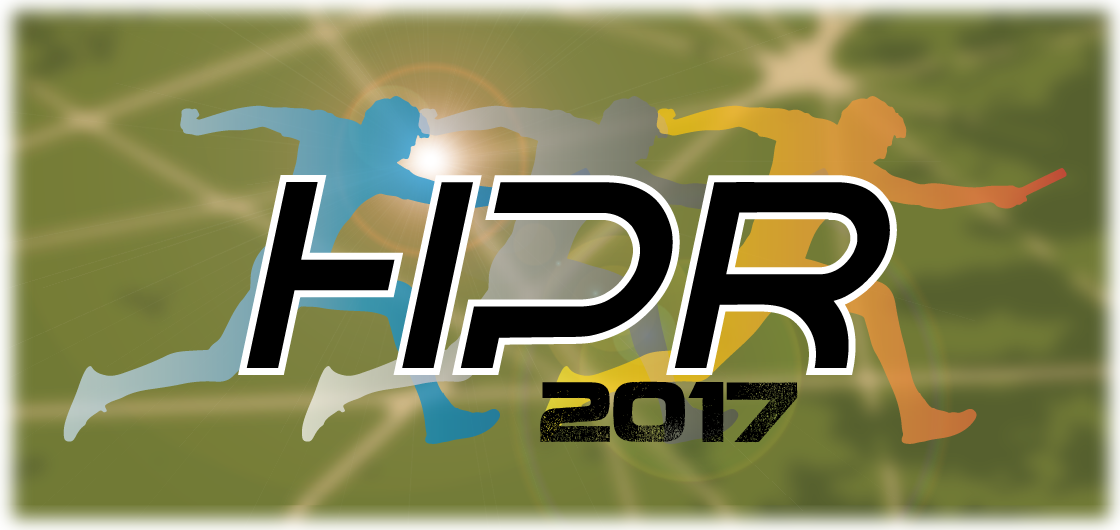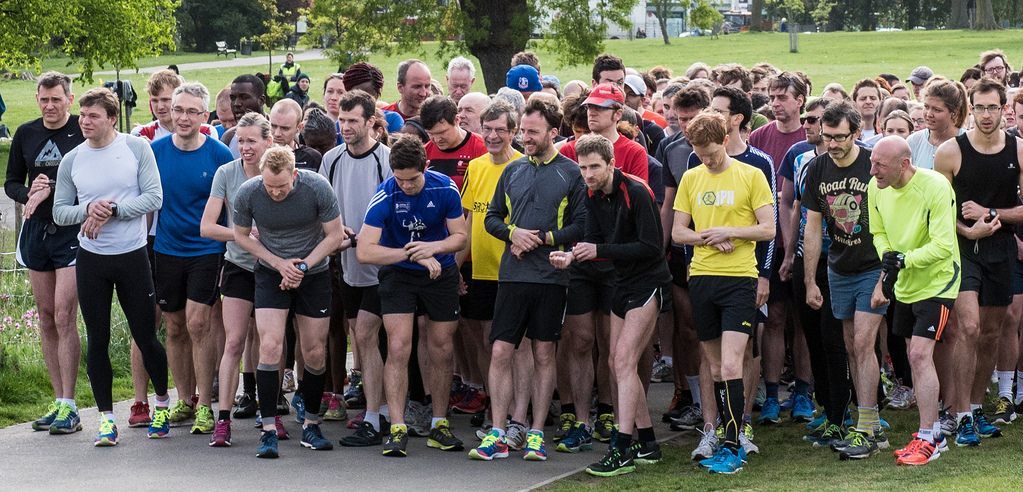
My first mass participation race was in 2005, the British 10k race in central London. I didn’t know much about running back then and I certainly didn’t have any tech, just a pair of Nike Free Run’s and bags of enthusiasm!
My senses were on high alert with the various sounds and wafts of deep heat spray. People had bottles of homemade energy drinks and gels, and were talking about the route and expected completion times. I remember the shuffling sounds of people and the excited conversations taking place all around me on the start line.
Fast forward ten years and there’s a new sound on the start line; the sound of beeps and bleeps as runners frantically try to get a good GPS signal. Participants come fully clad in smart watches and heart rate monitors; Garmin’s and TomTom’s alike. Last minute decisions on the perfect soundtrack for the run are made in the holding pen. Camera phones panning and zooming as newbie runners try to capture the moment, whilst headphones are plugged in to get runners in the zone.
Hands poised. Ears waiting. The starting gun is greeted by a wave of beeps as runners activate trainer-bound timing chips and start their GPS watches.
The cheers from the crowd soon fade as you run away from the start line and the race descends into an odd calm, disturbed only by the sounds of sniffs and shuffling feet. The silence continues until a chorus of beeps and “time: 25 minutes, distance: 5km, pace: …” is heard from all sides.
You dart past runners stopped at water stations, those tying laces and those adjusting phones strapped to their arms. A runner stricken with cramp hobbles the opposite way towards the aid station, busy instagramming their pain.
Thankfully, the finish line gleams in the distance – 400m to go, 300m, 200m… a drone hovers above, capturing the magic.
A sprint finish and it’s all over, your timing chip is exchanged for a finish time and goody bag. But the real joy comes later when you analyse your run and find yourself matching that increase in heart rate with that horrible hill at mile 4!
I’ll be honest, I love it! Like many people, I am lazy when it comes to running and often need novel tech to get me out. I have a Garmin Forerunner watch and never do sport without it. I’m part of a new breed of runners and genuinely feel that an untracked run is like wasted energy. Truth is there’s nothing wrong with that. Embrace the tech or be free and go without, just get out there and run!
Interested in running technology, but have no idea what’s out there or where to start?
Here are 3 ideas to get you going:
Apps, Apps and more Apps!
Mobile phones with built in GPS will allow you to tap into the now flooded running app market. They will keep you updated with your run statistics, such as distance, duration and current pace. Often, you can add running or weight loss goals and instantly brag about your progress on social media!
A common app is Strava, which is great for the competitive athlete. Strava tracks your run (or cycle) and breaks it into smaller segments. It then automatically compares your segments with the performances of other runners who have run the same route. Compete for the title of King or Queen of the segment and be notified when your fastest time is beaten!
Heart Rate Monitors
Research suggests that training within the correct “heart rate zone” will enable you to meet your goals easier, whether that’s improving general aerobic fitness, fat loss or increasing your sprint endurance. Heart rate monitors are worn across the chest and will give you a live readout of your heart rate during any activity. They are accurate, quite comfortable and are now relatively cheap (around £30).
GPS Watches
If you want to track your activity, but hate having a phone strapped to your arm then a GPS watch might be for you. GPS watches are now as cheap as £60 for entry-level models, but super fancy “smart” watches may cost over £400. Wrist-based heart rate monitors are now included as standard on newer models and improving technology means you can get information on your running stride length, predicted race times, estimated oxygen consumption and even sleep analysis!


